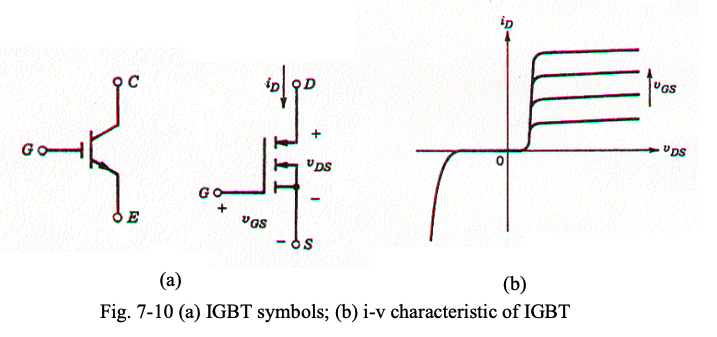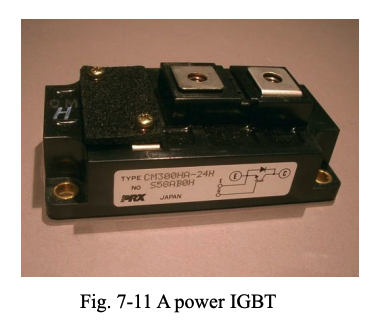When forward biased, IGBT can be turned on by applying a positive voltage between the gate and source or emitter.
The gate voltage must be maintained for as long as the switch is to be on. The switch can be turned off by applying a negative voltage between the gate and source or emitter.
The gate voltage must be maintained for as long as the switch is to be off.
Fig. 7-10 shows the symbols for an IGBT and the i-v characteristic of IGBT.

IGBT is a voltage-controlled switch. This implies that a very small power is required from the drive circuit to turn the device on and off. IGBT combines the advantages of MOSFET (low power consumption at the gate), BJT (low on-state voltage drop), and GTO (reverse voltage blocking capability, even though limited).
Newer generation IGBTs, called Non-Punch-Through (NPT IGBTs) or Reverse-Blocking (RB IGBTs), can block higher reverse voltages, but are slower in switching.
Fig. 7-11 shows the physical appearance of a power IGBT.
